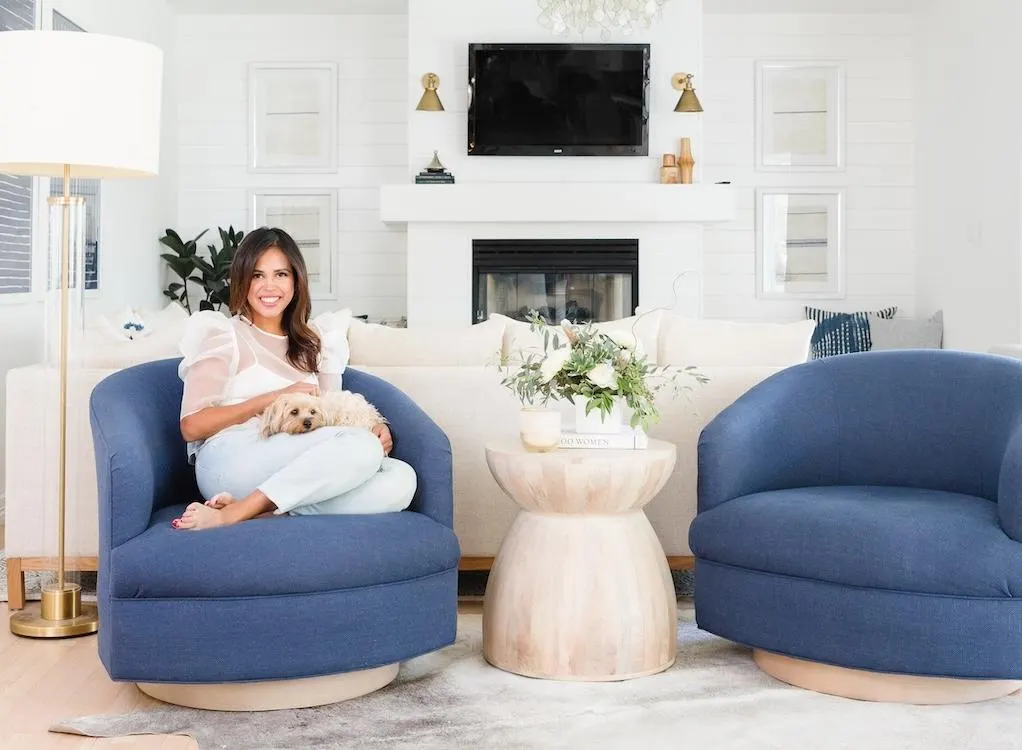Inside Havenly’s Growth: Lee Mayer On Acquisitions, Interior Define, And The Role Of AI In Design
By Amanda Lauren,Contributor
Copyright forbes

Havenly CEO and cofounder, Lee Mayer
Kylie Fitts Photography
While the interior design industry is filled with women, there are very few female executives. But Lee Mayer proves otherwise. The CEO and cofounder of Havenly Brands took what was essentially a tech platform and transformed it into a powerhouse, acquiring some of the most talked-about brands in the direct-to-consumer furniture and decor space, including The Inside, Burrow, Interior Define, St. Frank, and The Citizenry.
I recently spoke with Mayer to learn about how she built her business from a data-driven platform to a brand portfolio, as well as what the future holds for the industry as a whole as the era of AI comes into play.
From Data To Design
A beautiful space designed with Havenly
Kylie Fitts Photography LLC
After previously working for Bankrate, Bain & Company, and Canon, Mayer launched Havenly along with cofounders Emily Motayed and Jessie Dixon in 2014. The online interior design platform and shopping experience proved to be more than just an easy and accessible way for consumers to work with interior designers virtually and on a budget. “In our early years, we learned a lot about what customers wanted and what they didn’t,” Mayer tells me. “We developed a strong point of view on the white space in the category.”
At the same time, the home furnishings industry was undergoing a major shift with the rise and demise of various direct-to-consumer (DTC) brands. Once flush with venture capital dollars, many were now struggling to stay afloat.
MORE FOR YOU
Mayer saw an opportunity and first acquired The Inside. Best known for its custom furniture and traditional-leaning aesthetic, The Inside, like Havenly, was also female-founded. Just as Havenly made working with an interior designer more accessible, The Inside brought once-expensive, trade-only custom pieces online, allowing consumers to purchase them on their own at an accessible price point.
“We found scale and reach through bringing on our favorite of the rising home brands into our portfolio,” says Mayer. “But it was also something that aligned with Havenly’s values. We’ve always been grounded in the belief that everyone deserves to live in a home they love. Our homes are a backdrop to our lives. And as we’ve executed our acquisition strategy, we’ve been able to further deliver on that mission.”
Building On The Inside
After that, Havenly began acquiring a variety of brands that on the surface appeared to be in competition with one another, but in reality had very different aesthetics and niches.
Mayer tells me, “Each brand we’ve brought into our portfolio has a direct connection to the Havenly customer, current and prospective, while filling gaps in our own portfolio with compelling and accessible home design options. In general, they’re brands that we felt really resonated with their customer, and that I personally could see a path to growing.”
For example, The Citizenry appeals to customers who value ethical sourcing and craftsmanship, while St. Frank has more of a maximalist look with furniture and decor that feature a wide range of colors and patterns. On the other hand, Burrow offers modular, flexible designs that are ideal for small spaces.
A campaign for Burrow
“We think about whether or not there’s a functional need that is being filled by a brand, or if there’s a distinctive aesthetic that the brand really corners—and whether they’re resonating deeply with a group of customers that we can speak to,” notes the founder.
The Acquisition Of Interior Define
One of the most talked-about acquisitions is Interior Define. As a concept, the brand has parallels with The Inside because they offer custom pieces almost exclusively. However, these two businesses were run very differently.
In 2022, things came to a head when the company not only failed to pay its vendors but also ceased communication with their customers. As a result, orders were in limbo, and frustrated buyers who had already paid but never received their furniture took to the internet to vent. The future was not looking bright for Interior Define.
An Interior Define sectional and chair
Interior Define
The following year, Havenly acquired the company. “Interior Define, I think it’s been publicly reported how distressed that company was, so it had different deal dynamics and subsequent integration needs than a brand that wasn’t in quite as precarious of a financial position,” reveals Mayer. “They’re each different in their own way, and we continue to get better at our playbook, with each deal.”
In 2025, it’s safe to say Mayer’s golden touch redefined Interior Define.
AI And The Furniture Industry
One innovation having a major influence on all industries is AI, but the furniture and design industry has been particularly impacted. While controversial, Mayer generally feels positive about the technology and believes this innovation can be beneficial to both the brand and consumer. “I think AI is having a material impact on all businesses, and the home industry is no different,” notes Mayer. “From using AI to explore and identify trends, to thinking differently about teams from customer service to content creation, to designing homes—the most forward-thinking companies are getting curious about how to use AI to generate productivity, and serve the consumer better.”
While Havenly is a platform driven by human talent, the founder doesn’t see AI as a threat so much as a tool. “It will undoubtedly play a role in reshaping how people interact with design—particularly around inspiration, product discovery, and personalization. We also think there’s a ton of opportunity to use AI to drive tooling to make designers far more efficient and do what they do in far less time, and better,” she explains. “We do have a belief, though that there are things that humans just do better, and we think creativity and the art of design is in most cases going to need a human touch. The real opportunity is using AI to enhance the process, not replace it—to make good design more accessible, while still rooted in human creativity and judgment.”
And while many executives are looking forward to eliminating jobs through AI to increase their bottom line, Mayer’s perspective in a tech and data-driven world is quite the opposite. “We see AI as a powerful assistive tool. It can streamline sourcing, mood board creation, and even customer communication. That allows our designers to spend more time on the parts of their job that really move the needle: interpreting client needs, building trust and rapport, and adding that irreplaceable human touch to the creative process. It’s not about erasure, but rather optimization and efficiency.”
But most importantly, she believes that technology can’t replace humans when it comes to the creative process. “AI can certainly design homes, but it’ll always do so within rules, with patterns and trends that came before. Humans can create, they can break rules, they can go in a completely different direction from trend. Humans can also read between the lines, understand nuance, adapt to change and lend a listening ear in ways machines can’t. A human can pick up on how someone wants to feel in their home, even if they don’t know how to say it. So I’d say the act of true creation, of trend setting and rule breaking, but also the act of listening and truly validating, are deeply human and as far as I can tell, are not yet able to be replaced by AI.”
Editorial StandardsReprints & Permissions



